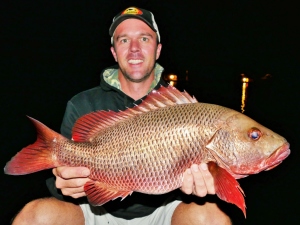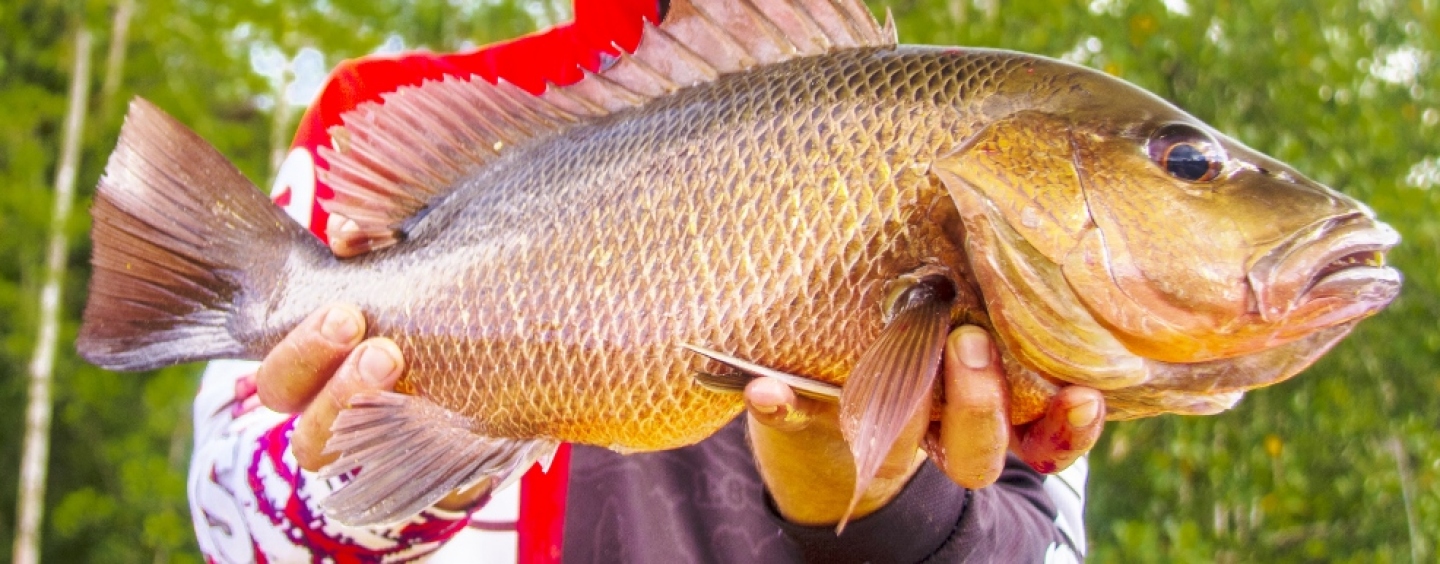It was mid-November and mangrove jack season was really starting to fire with good numbers of solid fish being landed. With a quick phone call to friend and the words, “The jacks are on,” and a trip was organised.
The next day was a very windy day blowing 30 knots from the southeast, but the three days prior saw temperatures up at 33 degrees with a storm on the forecast. Afternoon came and we decided to go despite the strong winds.
After collecting some live poddy mullet, we put the boat in the water and headed off to one of our favourite rock walls hoping for a good night. When we arrived, we anchored up and put baits in the water and in less than five minutes, I was fighting my first fish—a solid 52cm jack.
That set the pace and for the next three hours we had the pleasure of going toe-to-toe with some absolute thumpers. Photos were taken and all were released purely out of passion and respect for such magnificent species.
For those that have not yet felt the sheer power and explosive ability of this species, it is a must! Jack fishing has developed a huge—almost cult-like—following in recent years and for good reason. Here on the Gold Coast, we are lucky enough to have a healthy population of mangrove jacks that seem to wait longer than their northern brothers before heading offshore to the reefs. This means much larger fish of 60 to 90cm jacks in a river system or lake is almost unbelievable in other places but not here on the Gold Coast. The problem is landing it!
Staying in the strike zone
The single most important thing when fishing for jacks is keeping your lure or bait in the strike zone. Mangrove jacks are structure-bound and whether it is a snag, pontoon or rock wall, you will rarely succeed in catching one in open water. Your lure or bait must be right in the structure you are fishing. Try to fish up-current of your structure as this will naturally help your bait to drift right into and under your target. If your bait drifts or swims out of the zone, then cast it straight back in. Even if this means re-casting every 10 minutes.

When to fish?
First and last light are key feeding times. But fishing at nights is most productive as jacks have huge eyes and love hunting in the dark. For the best tides, I have found that this differs greatly depending on the amount of rain there has been and what section of the river you are fishing. For example, one night we were fishing up the back of the Coomera River near the weir just a few days after heavy rain and fishing was very slow with only a few small bream. My mate was adamant that it was dead and we should give up. I was stubborn! My argument was that the water was too cold and too fresh and that we should wait for the tide to come in and that will push in the warm saltier water. Two hours later when the clean and warmer water pushed up with the tide, we had one of the best jack sessions both of us can remember.
It is also very important to fish where the bait is. If the water is dead and quiet, then jacks will be the same; but if the water is alive with bait, then they will be there as well. So it always pays to spend the time finding where the bait is prior to fishing.
Lures or bait?
Lure fishing is definitely the most exciting form of mangrove jack fishing as you are more actively chasing the fish. Every cast or spot is a possible fish. But in my opinion, bait fishing is just as effective, if not more successful.
My normal session would be to throw lures at any and all structures until the sun goes down. When it does, I like to cast live poddy mullet and mullet strips at rock walls. At night, jacks come out of their homes and patrol these rock walls looking for food. This is when you will be most likely to catch one.
I like to use a 3/0 suicide hook for live bait, and for a strip of mullet, I like to snell two 3/0 hooks about five inches apart with a tiny running pea-sized sinker as this works well in the areas I fish. But be free to adapt and change things when you feel you should.
Catching one on a lure is the most rewarding. Good lures include the ever faithful Smith Cherry Blood, Gold Bombers, X-raps, Mad Mullet and Lucky Craft Pointers. For plastics, try Z-man swimmerz in 4-inch, McArthy’s paddle tails, and most prawn imitations. There are plenty more to name but the above will catch you jacks and are very reliable.
Where to fish
Almost all of the lakes on the Gold Coast that are connected to river systems are loaded with mangrove jacks. Most of the rock bars and rock walls are good as are the thousands of pontoons, jetties and boat moorings.
Land-based anglers are best off targeting bridges, rock bars and weirs, while boat anglers are best off travelling up the river until they locate the section that is holding all the bait and concentrate their efforts there.
It is hard to give exact locations without starting a riot. The key to finding a mangrove jack is to have a look at Google Earth and find the area you think will be good, and put the time in there. Persistence is the key!
By Cheyne Sales



























